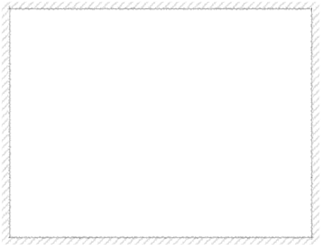From the MACBook of the Yogini
Bree’s Space

I find that as soon as January 1st rolls around, my natural levels of stress and anxiety plummet. My grieving for the loss of another year is over and all that remains in my heart is hope and boundless, new possibilities. However, for many, stress and anxiety remain with them year-round. And even for the most well-balanced individuals, stressful situations and challenging times will present themselves again and again. So maintaining balance and peace, for everyone, is an opportunity for personal growth.
What is stress?
Stress is the Self’s natural response to challenging situations. In some instances, it can actually be useful. Stress causes adrenaline to flow, and allows us to perform to our maximum potential. It is the biological “fight of flight” response that helps us to successfully focus on the current task at hand. But when stress becomes constant or “chronic”, a state of being where the body and mind never have a chance to relax and recharge, it can quickly and negatively affect our health.
What causes stress?
Many things can cause stress:. changes in one’s life, such as a new job, birth or death in the family, or moving homes. Even minor things can trigger on-going stress, such as traffic, deadlines at work, running children to activities and even the piles of laundry that never seem to go away.
What illnesses are linked to stress?
Prolonged exposures to stress have been linked to various physical and psychological illnesses. These symptoms range from depression, insomnia and neck/shoulder/back pain to high blood pressure, ulcers, infertility and even stroke.
How can we rid ourselves of stress?
Yoga is one of the best ways to alleviate stress. Remember that yoga includes many things: stretching & exercise, breathing techniques, relaxation, diet & nutrition, visualization & meditation; all of which have immediate and positive impacts on stress reduction. Just one session of deep breathing, relaxation & stretching will lower your blood pressure and reduce the amount of cortisol (a stress hormone) in your blood.
Where do we start?
Create a plan and Write it down. Develop some short and long term measurable goals. Each week review your goals. And most importantly, reward yourself for meeting them.
Here is a sample list of goals, which will allow you to incorporate yoga into your daily life. Don’t try to do all at once. Small steps are important in achieving long term goals. Set one or two goals for the first few weeks. Once they have become habits, try incorporating a few more into your daily schedule. If practiced regularly, you will notice a reduction in your levels of stress and anxiety almost immediately.
Early A.M. – Start your day right.
Begin your day with deep breathing & stretching before you even get out of bed. Practice deep diaphramatic breathing for several minutes. Stretch your arms above your head and point and flex your toes while lying on your back. Warm up your back by bending your knees and gently twisting your legs at the waist to either side of your body.
Breakfast - Eat healthy.
Whole grain oats with raw honey & soy milk, a spoon full of natural almond butter with plain yogurt, or any mixture or types of fresh fruits. Always begin your day with, water with half fresh squeezed lemon or some herbal tea.
Mid-Morning – Take inventory
Close your eyes, take some deep breaths and reflect on your day so far. If your day has started off negatively, now is the time to consciously make a directed change in your attitude. We cannot change the behavior of others, and we cannot change many of the things that are going on around us; however, we DO have the ability to change our reactions, our perceptions, and even our thoughts. Be positive, and positive things will happen.
Mid-Day - Be mindful
After lunch, take a few quiet moments to close your eyes, breath deeply, and focus on the moment. Notice your surroundings. Use all of your five senses. Take note of what you smell, hear, visualize, feel and taste. Being focused in the present moment will help to alleviate stressors triggered from thoughts of the past or worries of the future.
Mid-Afternoon - Get the Blood Flowing
This is the time of the afternoon slump. When we are most likely craving our bed, blankets and a nap. This is the time to get moving. Go for a quick walk or do some stretching at your desk. This will bring positive energy to the rest of the day.
Evening Commute – Unwind
Consciously release any negativity that has accumulated throughout the day. Evening traffic can have its advantages. We can pop in an inspirational CD or book on tape, listen to meditative or relaxing music, even take the opportunity to learn a new language while driving. Or, you can take this time to revel in silence. Clear your mind of any thoughts of what didn’t get done at work, or what’s on the agenda for the evening. Focus on silence, peace and your breath.
Dinner – Cultivate Gratitude
Be grateful for another day that you’ve had on this earth. Be thankful for the family or the pets you have to come home to. Or even be thankful for the home you have to come home to. Think of all the people in the world that have nothing, no food, no shelter and be grateful for what you have. Many of us take for granted the simple abilities to walk, to see, to bathe ourselves, to drive. Be grateful for the simple yet so important things in our lives. Graciousness facilitates peace, balance and harmony in life.
Evening – Stretch that body.
Whatever we have done during the day, whether it be to sit at a desk, work outside in the elements, or rush around on our feet, our bodies need to physically relieve stress and tension. The best way to do so is through yoga asana practice. Through stretching muscles, tendons and ligaments in the body, we increase blood flow, which in turn releases toxins, and reduces cortisol. There are many beginner yoga DVD’s and books on the market, or you can see some basic stretches here. Follow up your asana practice with a few minutes (to longer for the more experienced) of meditation.
Bedtime – Journal
Journaling is a wonderful creative, as well as therapeutic outlet. Not only will keeping a journal or diary provide you with a chronology of your life in years to come, it is also a useful stress management tool. While writing about your thoughts, feelings and actions, you will generally ask yourself questions to help clarify and understand your thought and behavior processes. This is a wonderful self-analysis tool, as well as a platform to vent your frustrations. You may find that through frequent journaling, you may end up answering those questions you asked yourself that once seemed impossible to resolve.



Saturday, January 5, 2008
Living Stress Free with Yoga



